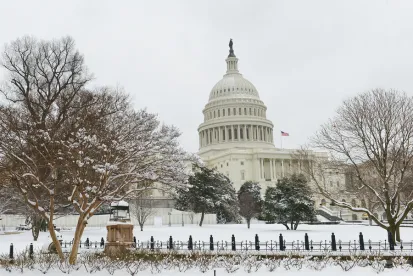Within the last week, there has been a flurry of activity from both Congress and the Internal Revenue Service (“IRS”) with respect to the Affordable Care Act (“ACA”). This post first reviews the delayed effective date for the Cadillac Tax, and then summarizes some guidance provided by IRS Notice 2015-87 which was issued on December 16, 2015.
Cadillac Tax Delay
On December 18th, the President signed into law the 2016 Consolidated Appropriations Act. This law delays by two years the provisions of the ACA that would have imposed a 40% excise tax on high cost employer-sponsored health coverage (the “Cadillac Tax”). A high cost plan is one where the cost for single coverage is more than $10,200 and the cost for two person or family coverage is more than $27,500. These thresholds are indexed for inflation after 2018. Under the new law, the Cadillac Tax is to be effective for tax years beginning after December 31, 2019. In addition, the new law provides that any Cadillac Tax paid by a provider, or an employer that sponsors a self-insured plan, is tax deductible. Previously, the Cadillac Tax was a nondeductible tax.
Cost of Living Adjustment to Affordability Safe Harbors and Penalties
The IRS had previously announced that the 9.5 percent of household income rate used to determine if an employer’s offer of coverage to an employee is affordable had been increased to 9.56 percent for plan years beginning in 2015 and adjusted to 9.66 percent for plan years beginning in 2016. In Q & A-12 of Notice 2015-87, the IRS announced that the two other affordability safe harbors, the W-2 safe harbor and the rate of pay safe harbor, each of which uses a 9.5 percent standard, are to be adjusted for inflation using the same adjusted household income rate. Employers may substitute the 9.56 percent for plan years beginning in 2015 and 9.66 percent for plan years beginning in 2016 when determining compliance with the W-2 safe harbor or the rate of pay safe harbor.
The $2,000 and $3,000 penalties under Code Section 4980H(c)(1) and (b)(1) imposed on employers that fail to offer coverage to substantially all full-time employees or fail to offer affordable minimum value coverage to full-time employees are adjusted for 2015 to $2,080 and $3,120 respectively, and for 2016 are adjusted to $2,160 and $3,240 respectively.
Opt-Out Payments
Prior to the enactment of the ACA, it was not unusual for an employer to offer its employees a taxable payment if the employee elected to waive health care coverage. With the enactment of the ACA and its income based tax credit rules, representatives of Treasury and the IRS have informally mentioned that the value of the opt-out payment should be included when determining whether an offer of coverage is affordable since the employee is foregoing an economic benefit (the cash payment) when he elects coverage. For example, if an employer requires that an employee pay $200 per month for self-only coverage, and offer the employee $100 per month if the employee waives coverage, IRS representatives have informally indicated that the employee’s cost of coverage for purposes of the affordability rules of Code Section 4980H is $300 per month (the sum of the $200 that the employee must pay for the coverage and the $100 the employee did not receive because he elected coverage). In Q & A-9 of Notice 2015-87, the IRS officially announced its position that opt-out payments must be counted under the Code Section 4980H affordability rules, and provided notice that it will be issuing proposed regulations consistent with its foregone economic value position.
Employers that offered an opt-out arrangement on December 16, 2015, including certain employers that had provided written communications to employees about an opt-out arrangement prior to December 16, 2015, are not subject to this rule for 2015 or 2016. This means that these employers do not have to include the amount of the opt-out payment in their affordability analysis or in the cost of coverage reported on Form 1095-C until final regulations are issued, which is not expected to be prior to January 1, 2017. However, until further guidance is issued, an employee may treat the opt-out payment as increasing the employee’s required contribution for purposes of determining the employee’s eligibility to receive a premium subsidy for coverage purchased on the exchange.
The IRS recognizes that its position on opt-out payments could cause hardship for employers who are subject to the McNamara-O’Hara Service Contract Act or the Davis-Bacon Act and must pay workers prevailing wages and fringe benefits. These employers may provide employees with cash equal to the value of the forgone health coverage, and the application of the opt-out rule and/or the health flex contribution rules announced in the Notice may cause certain difficulties for the employer. Treasury and the IRS will continue to consider how the prevailing wage rules and the affordability rules under Code Section 4980H may be coordinated and have provided in Q & A-10 suggested reporting rules for plan years beginning before January 1, 2017.
Health Reimbursement Arrangements
To comply with the ACA’s annual dollar limit prohibition, a Health Reimbursement Arrangement (“HRA”) must be integrated with the employer’s health plan. This integration rule prohibits the HRA from reimbursing the employee for co-pays and other expenses incurred by the employee’s spouse or dependent when the family member is not enrolled in the employer’s health plan. Recognizing that many HRAs do not currently restrict reimbursements to expenses incurred by individuals who are covered by the employer’s health plan, in Q & A-4, the IRS announced that it will not treat an HRA that would otherwise be integrated with the employer’s plan as failing to be integrated with such plan for plan years beginning before January 1, 2017, solely because the HRA covers expenses of one or more family members who are not enrolled in the employer’s plan. The employer must report under Code Section 6055 the coverage as minimum essential coverage for each individual for whom the HRA could reimburse expenses but is not also enrolled in the employer’s plan.
Employer Payment Plan
In Q & A-6, the IRS confirmed that an arrangement by which a Code Section 125 cafeteria plan (whether or not funded solely by employee salary reduction or also including other employer contributions) is used to pay or reimburse the cost of individual market coverage is a group health plan for purposes of the market reforms. Further, a cafeteria plan cannot be integrated with the individual market coverage and therefore will fail to comply with the ACA’s annual dollar limit prohibition and will fail to satisfy the ACA’s market reform rules. Code Section 4980D provides for a $100 per day per employee penalty for violations of the ACA market reforms.
Staffing Agencies and Educational Organizations
In recognition of the extended summer recess period during which employees at an educational organization do not perform services, these employees are subject to a special rehire rule under which they are only treated as a new employee after a break in service of at least 26 consecutive weeks. In Q & A-15, the IRS announced its intent to amend the regulations under Code Section 4980H to impose the special rehire rule on employees who are not directly hired by an educational organization but who provides services primarily to an educational organization and are not provided a meaningful opportunity during the summer recess months to provide services to another organization. These new rules will apply as of the applicable date specified in the yet to be proposed regulations.
Health FSA Carryovers and COBRA
COBRA continuation coverage is not required to be offered for a health flexible spending account (“FSA”) unless as of the date of the qualifying event, the amount that the qualified beneficiary is entitled to receive during the remainder of the plan year exceeds the amount the health FSA may require to be paid for COBRA continuation coverage for the remainder of the plan year. In the Notice, the IRS addresses when COBRA must be offered with respect to a health FSA that allows for the carryover to the following year of up to $500 of unused benefits. Specifically, any carryover amount is included in determining the amount of the benefit that the qualified beneficiary is entitled to receive during the remainder of the plan year. In addition, the maximum amount that a health FSA is permitted to require to be paid for COBRA continuation coverage does not include unused amounts carried over from prior years.
In addressing a non-COBRA situation, Q & A-24 provides that a health FSA may limit the availability of the carryover of unused amounts to those individuals who have elected to participate in the health FSA in the next year, even if the ability to participate in that next year requires a minimum salary reduction election the health FSA. For example, if the health FSA requires that an employee must contribute a minimum of $5 per calendar month to participate and an employee who would otherwise have a carryover amount available as of January 1, 2016 does not elect to participate in the health FSA as of January 1, 2016, that employee would forfeit the carryover as of December 31, 2015.
Notice 2015-87 also includes guidance on when an employer’s flex credit contributions to a cafeteria plan reduce an employee’s cost of coverage, whether after-tax disability payments count towards hours of service, and when a government entity must have its own employer identification number. The complete text of IRS Notice 2015-87 is at https://www.irs.gov/pub/irs-drop/n-15-87.pdf




 />i
/>i

